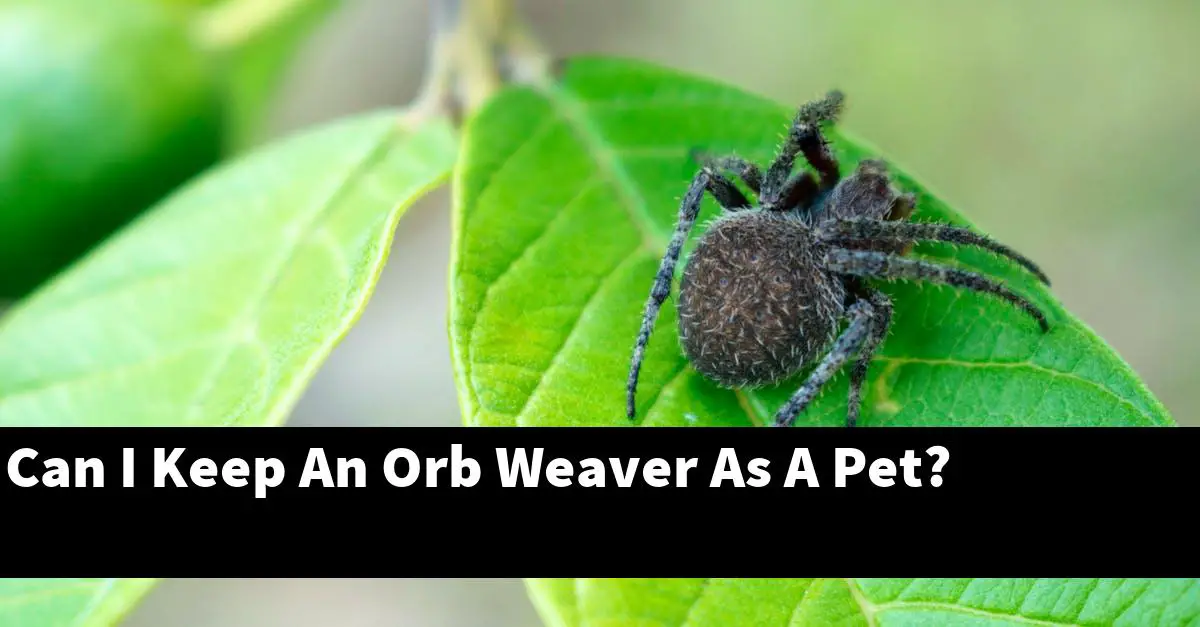Orb weaver spiders are a type of spider that is known for the intricate webs they weave. They are found in a variety of habitats all over the world and come in a range of colors and sizes.
Some orb weaver spiders are even considered to be beneficial because they help to control the populations of harmful insects. While orb weaver spiders can make interesting and even docile pets, there are a few things to consider before bringing one home.
First, orb weaver spiders require a large enclosure as they are active hunters and need space to build their webs. Secondly, they should be kept alone as they are not social creatures and may become aggressive if kept with other spiders.
Finally, orb weaver spiders need to be fed live insects as they do not eat plant matter. If you are considering keeping an orb weaver spider as a pet, be sure to do your research to ensure that you can provide the proper care for your new pet.
Table of Contents
Can I keep an orb weaver as a pet?
No, orb weavers are not good pets because they are wild animals. They are not domesticated and cannot be trained.
They are also dangerous because they can bite and their venom can cause serious health problems in humans.
What do orb weavers eat?
Most orb weavers are generalists and will eat a range of prey including flying insects, crawling insects, and even small vertebrates. Some species, however, have more specialized diets.
For example, the green orb weaver (araneus diadematus) feeds primarily on flying insects, while the cross orb weaver (araneus pegnia) feeds primarily on caterpillars.
How long do orb weavers live?
Orb weavers are a type of spider that live for about one to two years. They are known for their large, round webs that they build to catch prey.
Orb weavers are found all over the world and are active during the day.
What do orb weavers build their webs with?
Orb weavers build their webs with a sticky silk that they produce in their abdomen. The silk is produced in spinnerets, which are located at the back of the abdomen.
The silk is then drawn out through the spinnerets and onto the web. The silk is sticky because it contains a protein that is attractive to prey.
The protein is also what allows the spider to climb on its web.
What is the biggest orb weaver spider?
The biggest orb weaver spider is the goliath birdeater, which can have a leg span of up to 30 cm (12 in). This spider is found in the tropical forests of south america and is the largest spider in the world by mass, weighing in at up to 175 g (6. 2 oz). The goliath birdeater is a member of the tarantula family and is known for its ability to eat birds, although it typically preys on insects.
How long do orb weavers live in captivity?
Orb weavers are a spider species that are known for the large, intricate webs that they build. They are found all over the world and come in a variety of sizes and colors.
In captivity, orb weavers can live for several years, provided they are given the proper care. This includes a suitable enclosure, appropriate diet, and regular maintenance.
Orb weavers are relatively easy to care for, making them a popular choice for spider enthusiasts.
Can I catch a spider and keep it as a pet?
It is possible to catch a spider and keep it as a pet, but there are a few things to consider before doing so. First, spiders are predators and may feed on other insects in your home, which could become a nuisance.
Second, spiders can be aggressive, and some species can bite humans if they feel threatened. Finally, spiders require special care, including a warm, humid environment and a diet of live insects.
If you are prepared to provide these conditions, then catching and keeping a spider as a pet can be a rewarding experience.
Summary
Orb weaver spiders can make for interesting and unique pets. They are not difficult to care for, but there are a few things to keep in mind.
First, they require a diet of live insects. Second, they should be kept in a terrarium with plenty of places to climb and build their webs.
And finally, they are not particularly affectionate creatures so don’t expect too much cuddling.

